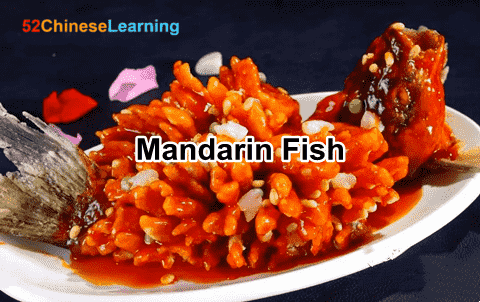Copy link succeeded! Now can share to friends.
China has a rich ancient civilization that perfected different delicacies and cuisine along the way. They have thousands of years of food culture. That is why today, we will examine one classic Chinese delicacy. It is a famous traditional dish of Han nationality in Suzhou, Jiangsu: Sweet and Sour Mandarin Fish. This dish has been listed as the top-grade delicacy in banquets all over the south of the Yangtze River. People around the world also enjoy this dish. After all, why wouldn’t you? The dish is colorful, fragrant, tasty, and appetizing. Additionally, it has an interesting sound. The hot sizzling sound when fried mandarin fish is served on the table then poured with steaming marinade. Then it is poured with steaming marinade, and the fried fish squeaks like a real squirrel.

200g mandarin fish, 2g cooking wine, 10g pine nuts, a little pepper, 10g tomato sauce, 500g vegetable oil, 40g wet starch (actual consumption is 50g), the proper amount of salt, and 15g vinegar.
Remove scales, gills, fins, and internal organs of the fish, turn around the fur coat, wash it, cut off the fish head, spread it out and pat it flat. Cut off the bones of the fish back with a knife (don’t cut the belly). Leave about a rainy spine at the tail. After the fish is boneless, take its skin and spread down, and it is cut into a flower with an oblique knife. The knife is as deep as 4/5 of the meat. Don’t cut the skin of the fish, open a mouth at the tail, and pull the tail out of the blade. Sprinkle salt, pepper, cooking wine, and wet starch (a little) on the fish body and spread evenly.
Stir-fry the pan, heat it, then pour in the vegetable oil, heat the oil to 70%, dip the mandarin fish in a little starch, fry it in an oil pan for several minutes, then dip the fish head in starch, fry it in an oil pan until it is golden yellow, take it out, put the side with the flower knife up in the fish plate and put the fish head on it. Put the pine nuts in an oil pan, take them out when cooked, and put them in a small bowl. Leave a little oil in the wok, add a little clear soup, add salt, sugar, tomato sauce, and vinegar, boil, thicken with wet starch, add a little hot oil, stir well, pour it on the fish, and sprinkle with pine nuts.
Sweet and Sour Mandarin Fish Gusu cuisine is a masterpiece. This dish is colored, fragrant, tasty, and appetizing. It also has an interesting sizzling sound during the sauce pouring process that makes the experience lively and enchanting. They said that when the fried mandarin fish is served on the table, the sauce poured makes a squeaking sound like that of a squirrel.
It is said that as early as when Emperor Qianlong went down to Jiangnan, there were squirrel carp in Suzhou, and Qianlong had tasted it. Then it developed into Sweet and Sour Mandarin Fish. There are records of Mandarin fish in Diaodingji of the Qing Dynasty. They often take seasonal fish, prepare it meticulously, and fry it until golden brown. They later introduced a sauce pouring aspect to make squirrel style. Cooking with oil and soy sauce. Season fish should be crucian carp.
This record indirectly proves that the legend of squirrel carp in the Qianlong period of Suzhou is possible. That is because many dishes in Tiaoding Collection are clean and fresh. This period could be the exact origin of this dish which makes the delicacy centuries old! Secondly, it can be explained that today’s Sweet and Sour Mandarin Fish is developed on the basis of Mandarin fish. The difference is that in ancient times, the Mandarin fish was hung with egg yolk paste, but today, the Mandarin fish is dried starch.
In ancient times, Mandarin fish was fried with oil and soy sauce, but today, after frying, the prepared marinade is poured directly on it. In addition, nowadays, the dish is more realistic in shape, and its taste is sweet and sour, which is unmatched by ancient Mandarin fish.
There are eight major cuisines in Chinese cuisine, each of which has countless famous dishes with its own characteristics. These differences attract people from different walks of life around the world. Eating according to the season all the year round is another major feature of Chinese cooking. Since ancient times, China has been seasoning and cooking side dishes according to seasonal changes. People always opt for a mellow taste in winter and light and cool in summer. More stew and hotpots in the winter and refreshing meals in the summer. Today’s Sweet and Sour Mandarin Fish, Did you learn it?
Your first 1-on-1 Chinese lesson offer